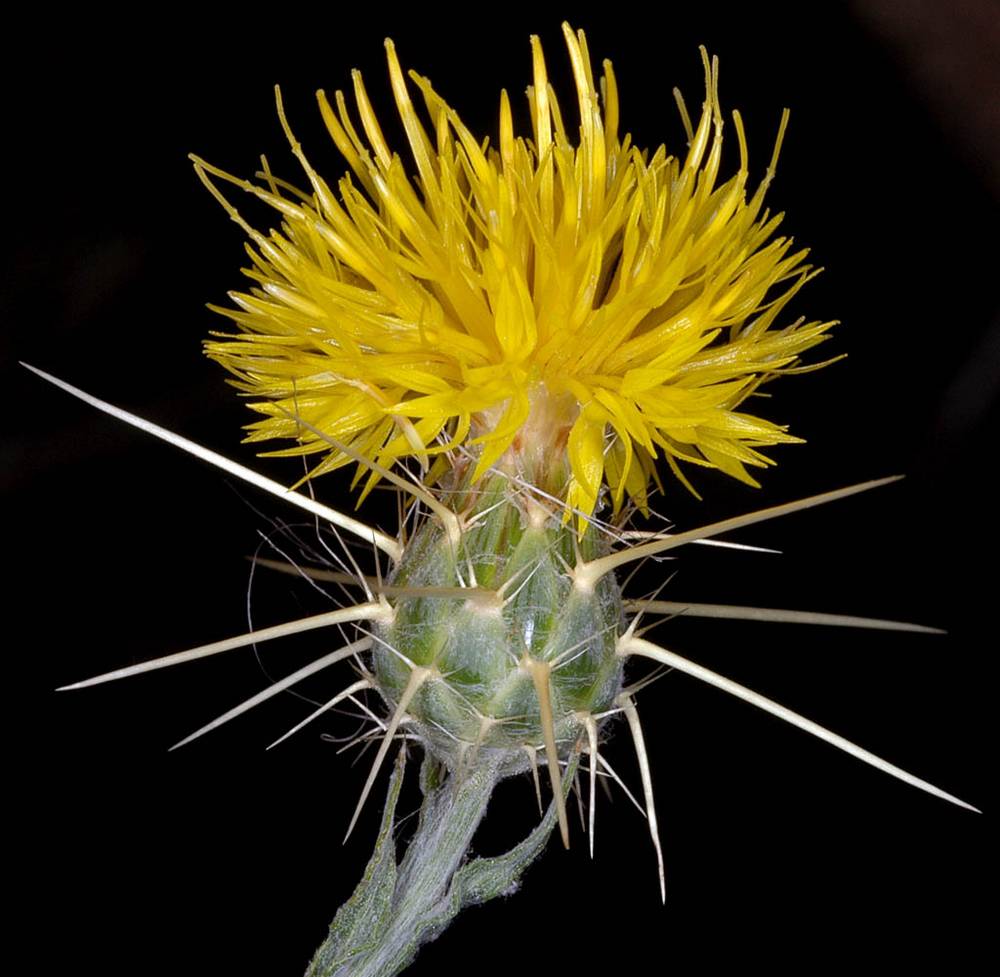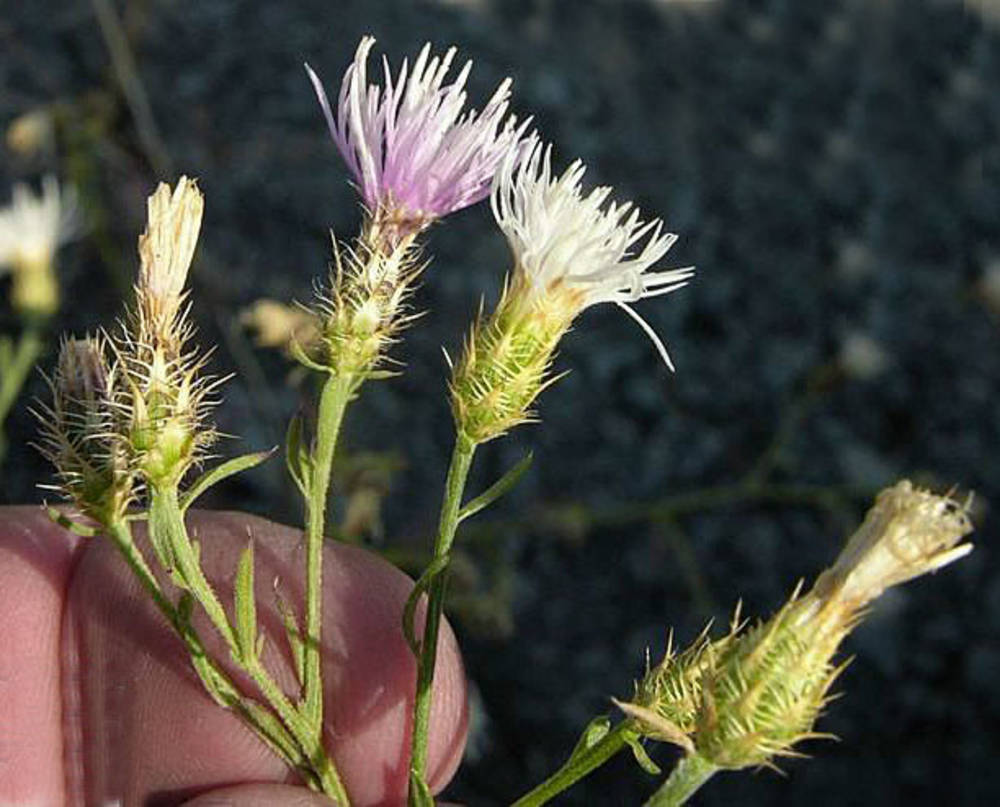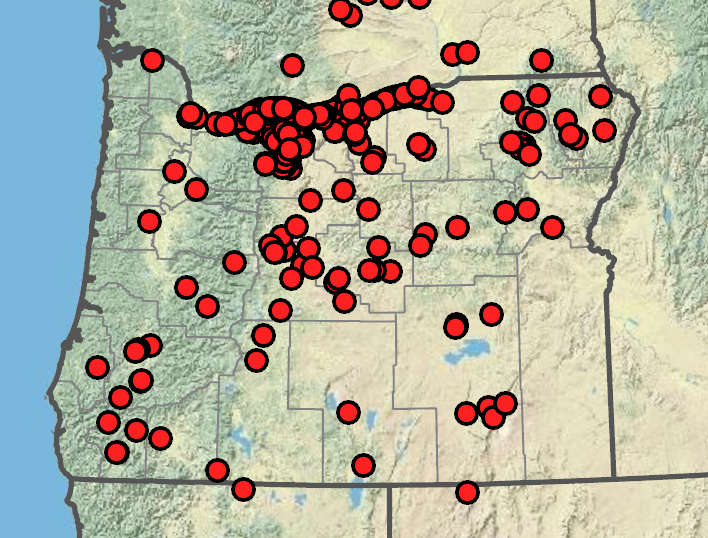Centaurea solstitialis
Centaurea diffusa
St. Barnaby's thistle, yellow starthistle
diffuse knapweed, tumble knapweed
1–many, branched from bases, tomentose.
branched throughout, puberulent, sparsely to densely tomentose.
tomentose and scabrous to bristly, bases decurrent;
basal and lower cauline blades often absent at maturity, 5–15 cm, pinnately dissected or lobed;
petioles winged; upper cauline blades oblong to linear, 1–10 cm;
margins entire or slightly dentate, sessile.
surfaces hispidulous and sparsely to densely tomentose;
gland-dotted;
basal and lower cauline blades 10–15 cm, 1- or 2-pinnately divided to narrowly lobed, petiolate; upper cauline blades much reduced, 1-pinnate to entire, sessile.
cyme-like clusters or heads solitary.
diffuse; panicle-like arrays.
ovoid, 10–15 mm.
cylindric to narrowly ovoid, 10–13 mm.
yellow, sterile florets ? fertile florets, fertile florets 13–20 mm.
creamy white, rarely pink or purple, sterile florets ? fertile florets, fertile florets 12–15 mm.
outer ovate;
bodies green, palmately spiny;
central spines stout, 10–25 mm; straw-colored; inner with smaller hyaline appendages.
pale green, with a few prominent parallel veins; outer ovate to lanceolate; straw-colored;
central spines 1–4 mm; inner lanceolate, lacerate or spine-tipped.
dimorphic; outer 2–3 mm, dark brown, glabrous;
pappi 0; inner light brown or mottled, pappi of white bristles, 2–4 mm.
2–3 mm, dark brown, glabrous;
pappi absent or < 0.5 mm.
disciform, pedunculate.
disciform;
peduncles short.
=16.
=18.
Centaurea solstitialis
Centaurea diffusa
Disturbed areas, roadsides, woods, fields, pastures, streambanks. Flowering Jul–Oct. 0–2000 m. BR, BW, Col, CR, Est, Lava, Sisk, WV. CA, ID, NV, WA; throughout North America; Europe. Exotic.
Centaurea solstitialis is an aggressive weed of pastures and rangeland in western North America, often forming dense stands. This species is cumulatively toxic to horses, potentially causing a disorder known as “chewing disease.” See also C. × gerstlaueri.
Disturbed areas, roadsides, gravelly or rocky sites, grasslands, woods. Flowering Jun–Aug. 0–1500 m. BW, Casc, Col, ECas, Lava, Owy, Sisk, WV. CA, ID, NV, WA; throughout North America; Europe. Exotic.
Hybrids of C. diffusa and C. stoebe ssp. micranthos are known to occur within Oregon.
Bridget Chipman
Bridget Chipman
- Local floras:
BC,
CA,
OR,
WA
- Local Web sites:
CalFlora,
CalPhotos,
Flora NW,
PNW Herbaria,
Turner Photog.
WildflowerSearch
iNaturalist (observations)
USDA Plants Database
- LBJ Wildflower Center
- SEINet
- Plants of the World Online
- Encyclopedia of Life
- Wikipedia
- Google Image Search
- Local floras:
BC,
CA,
OR,
WA
- Local Web sites:
CalFlora,
CalPhotos,
Flora NW,
PNW Herbaria,
Turner Photog.
WildflowerSearch
iNaturalist (observations)
USDA Plants Database
- LBJ Wildflower Center
- SEINet
- Plants of the World Online
- Encyclopedia of Life
- Wikipedia
- Google Image Search





